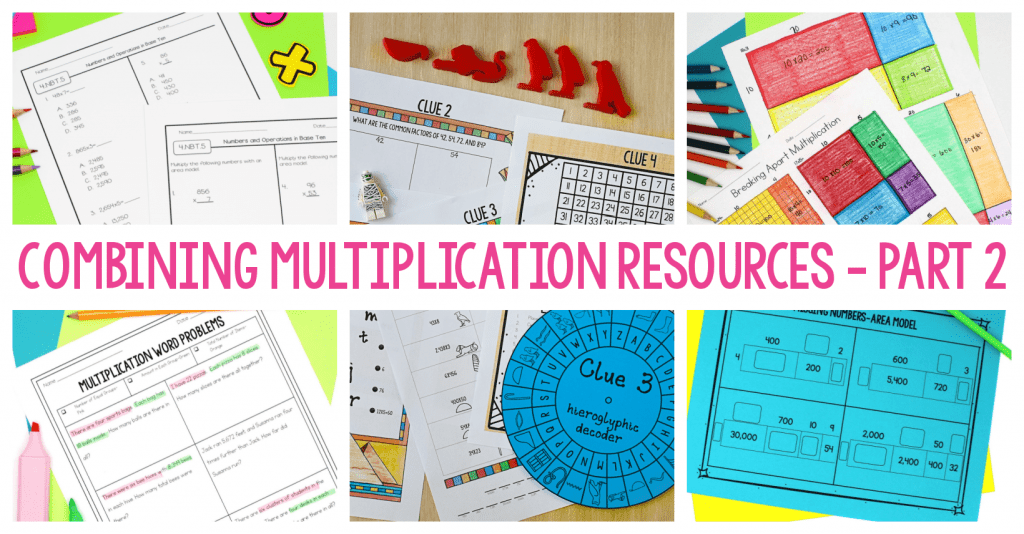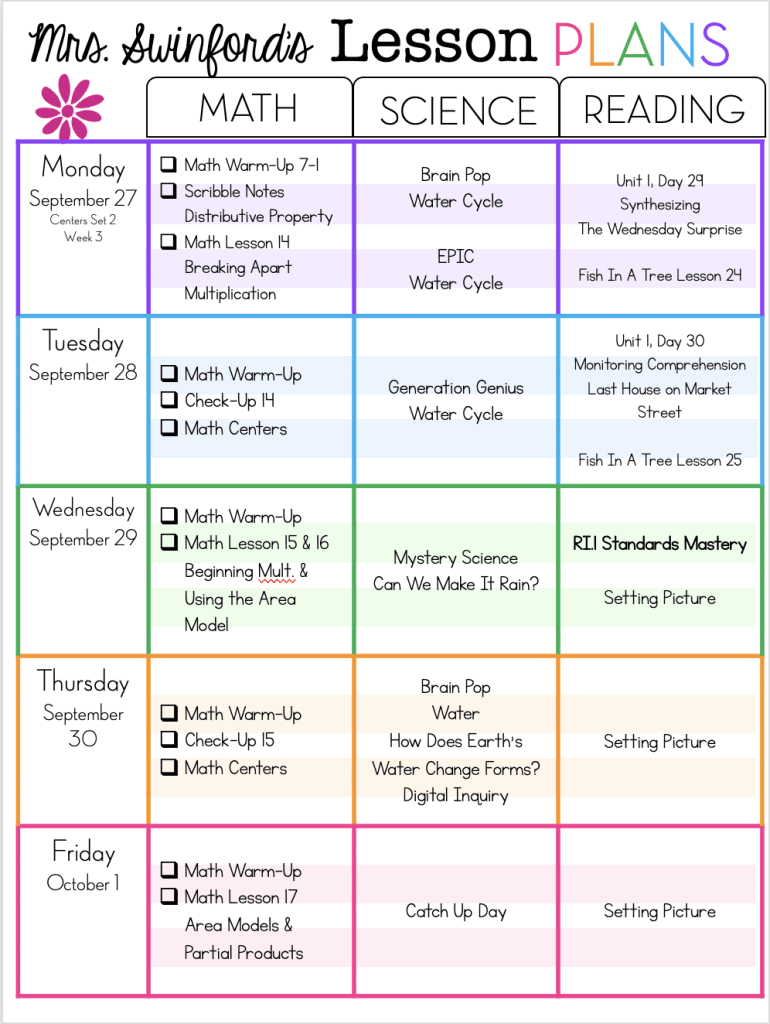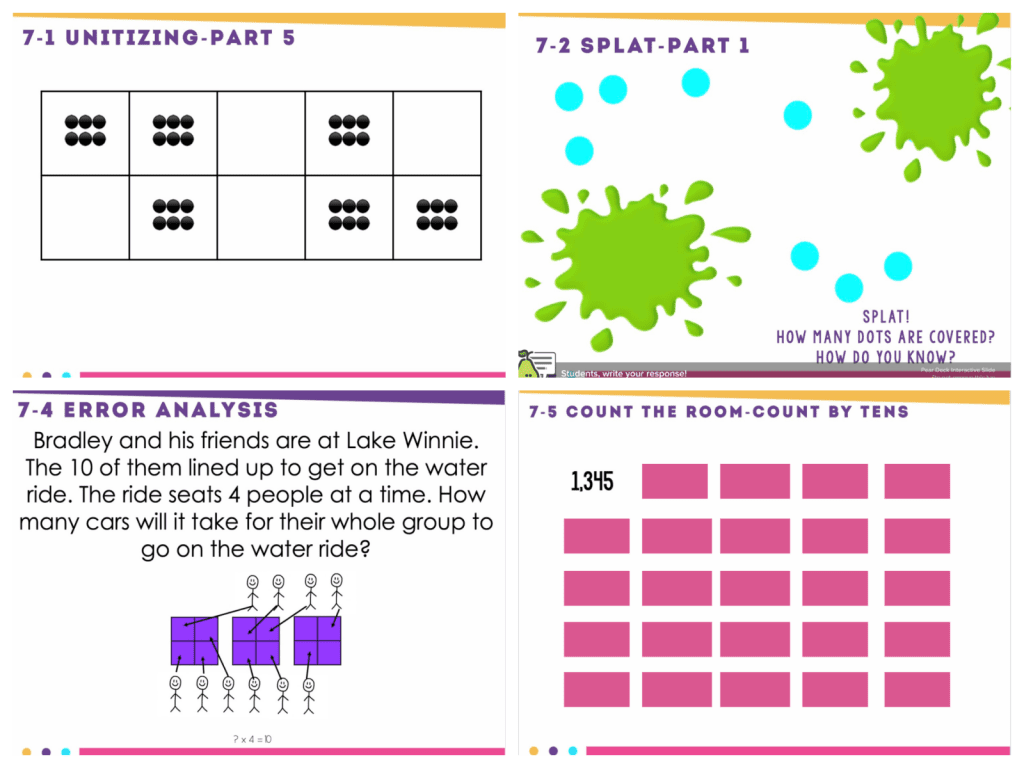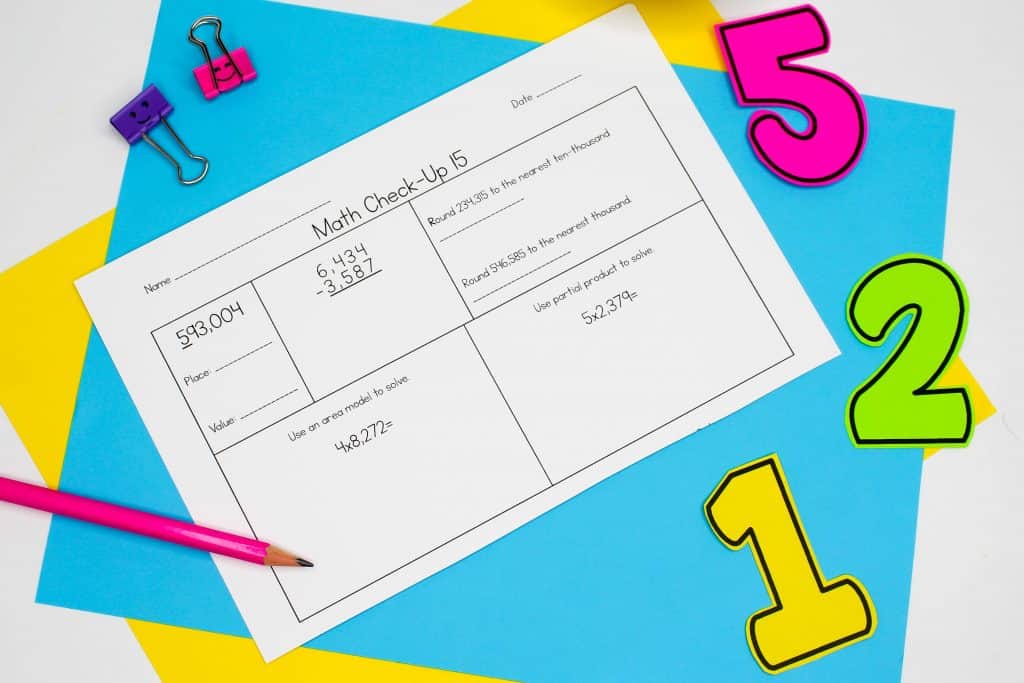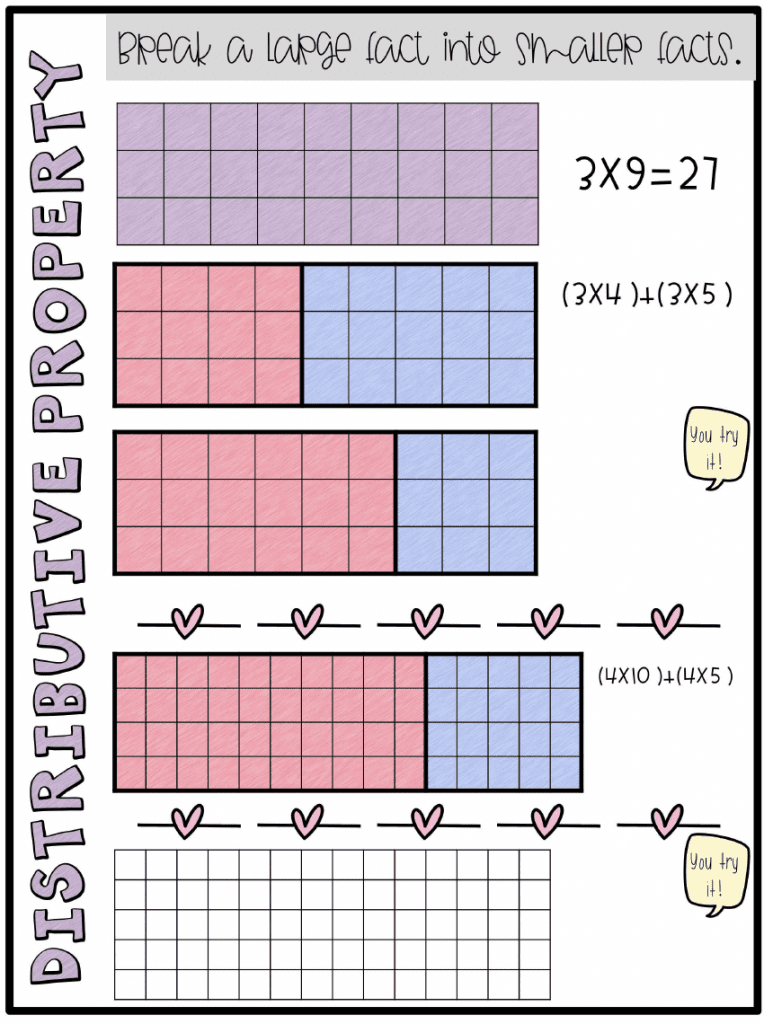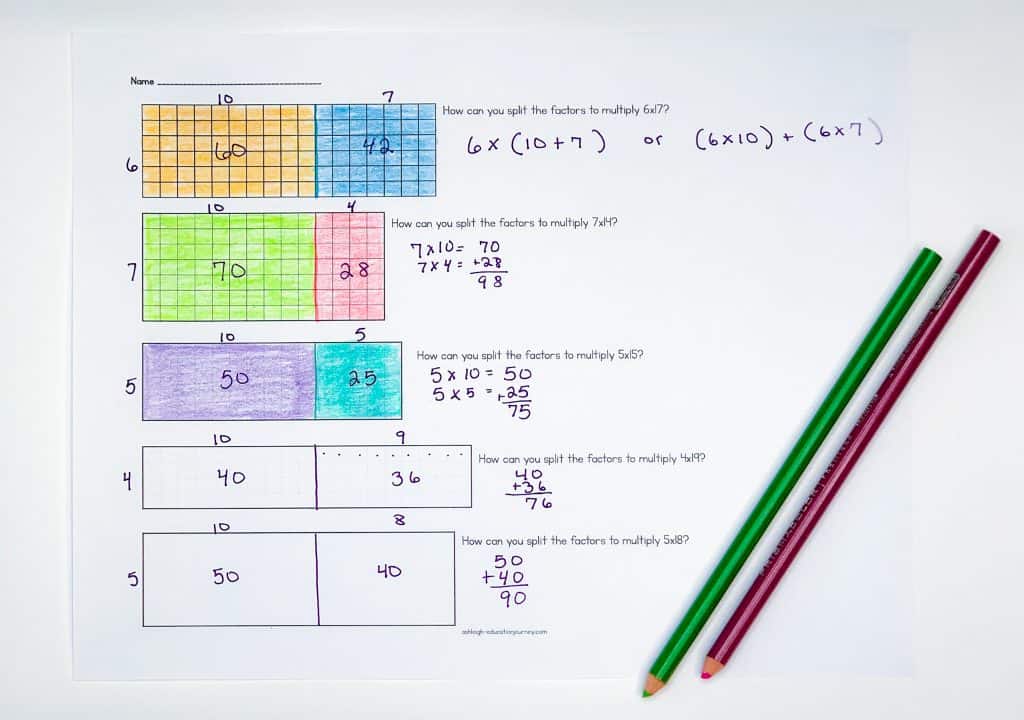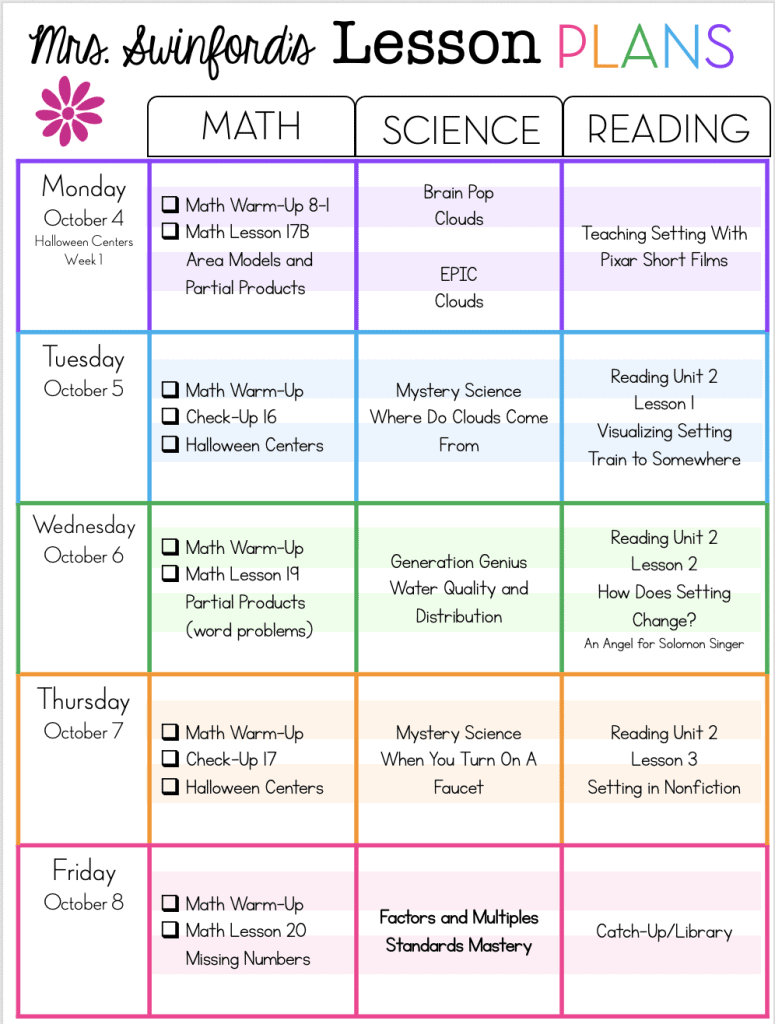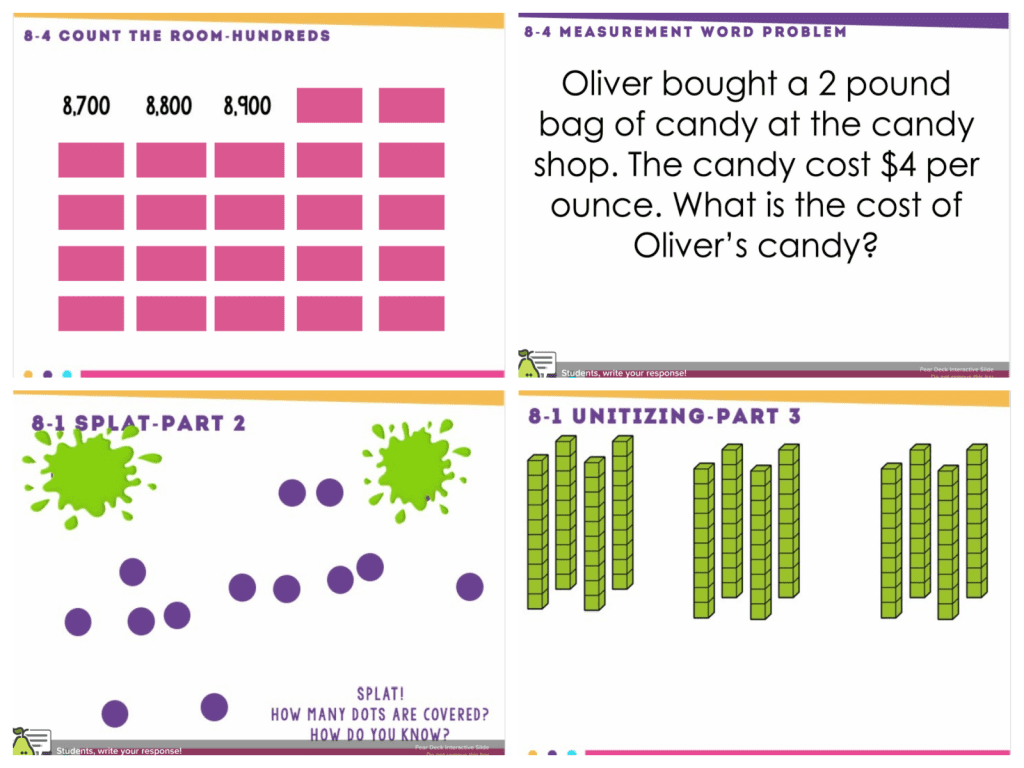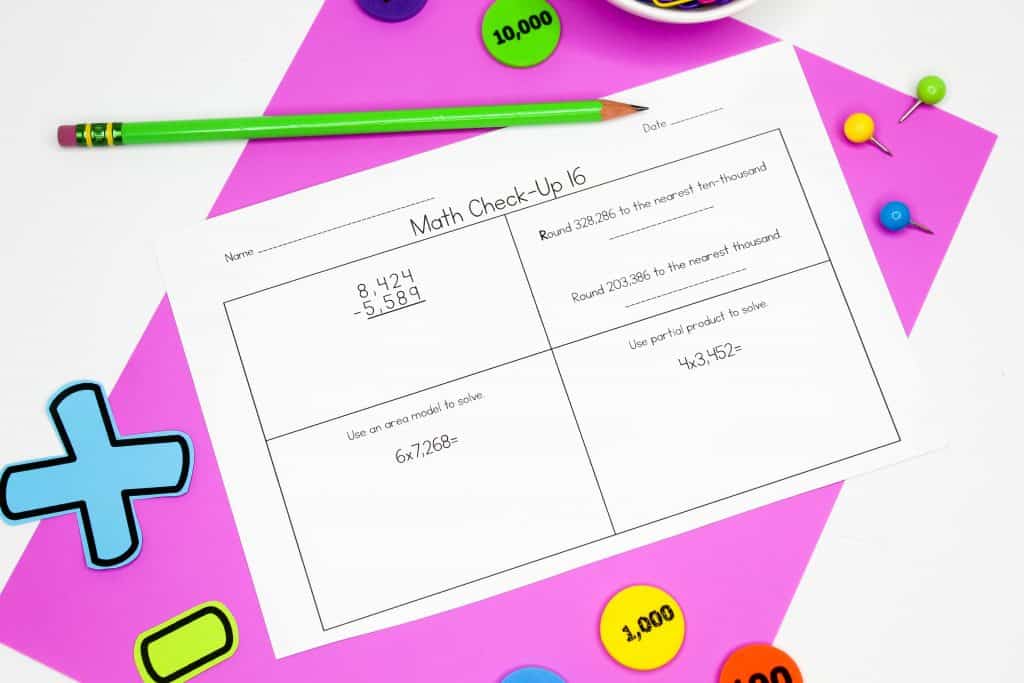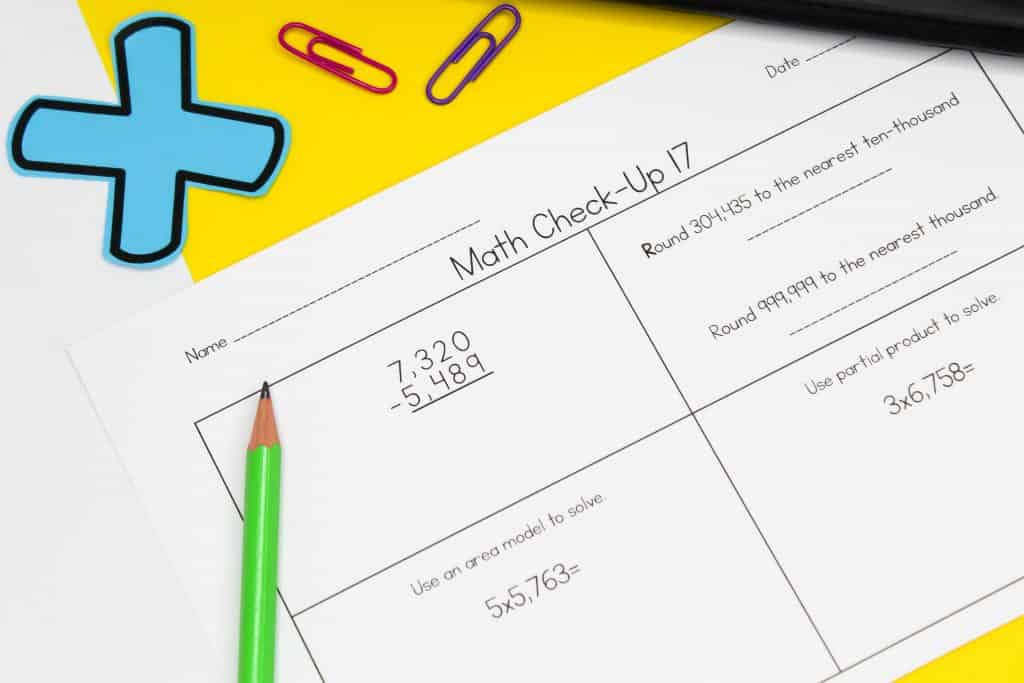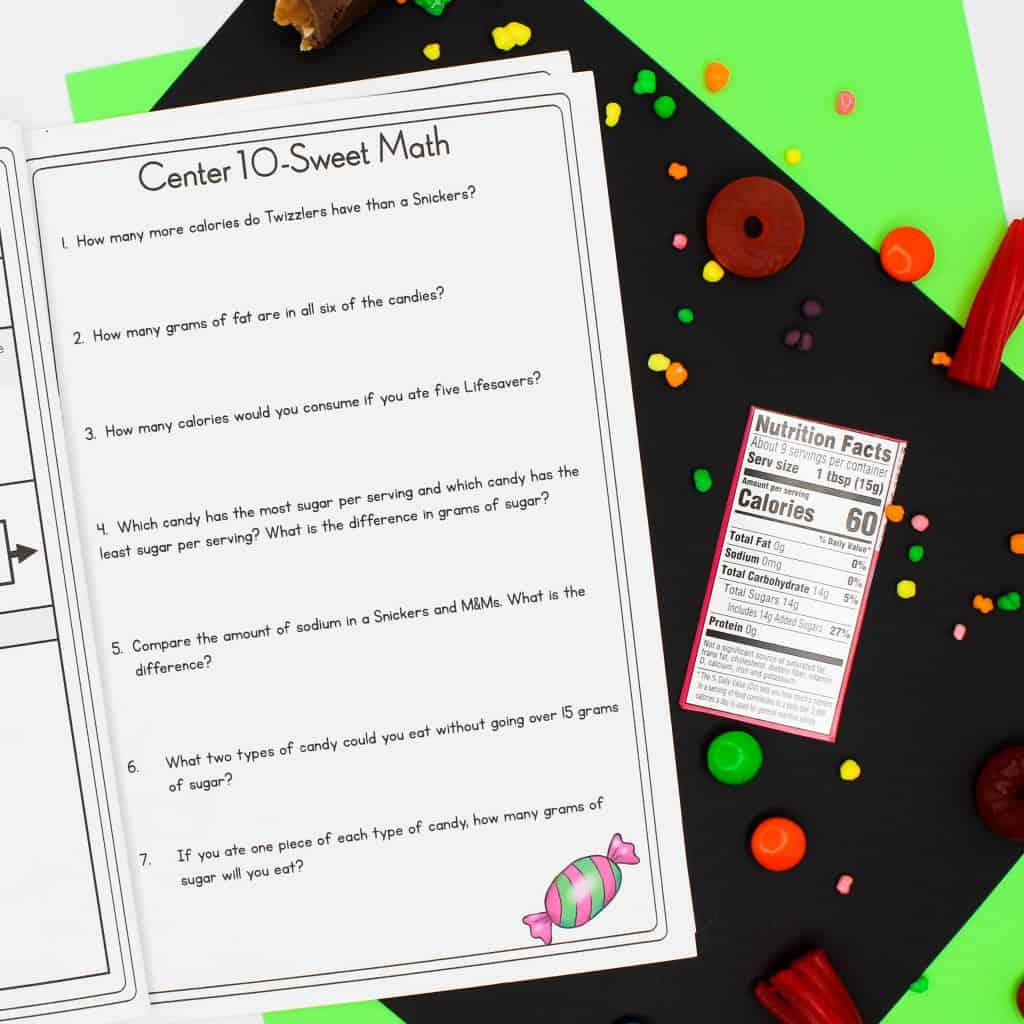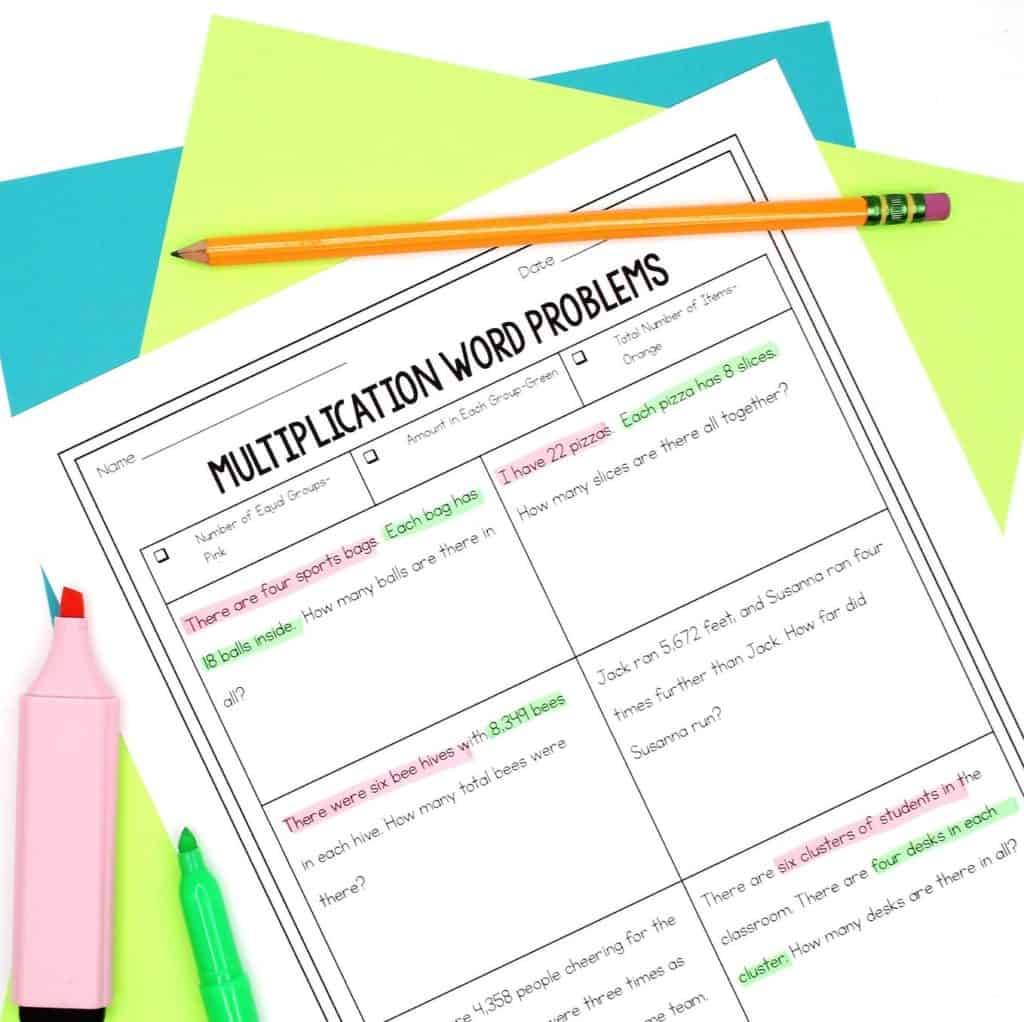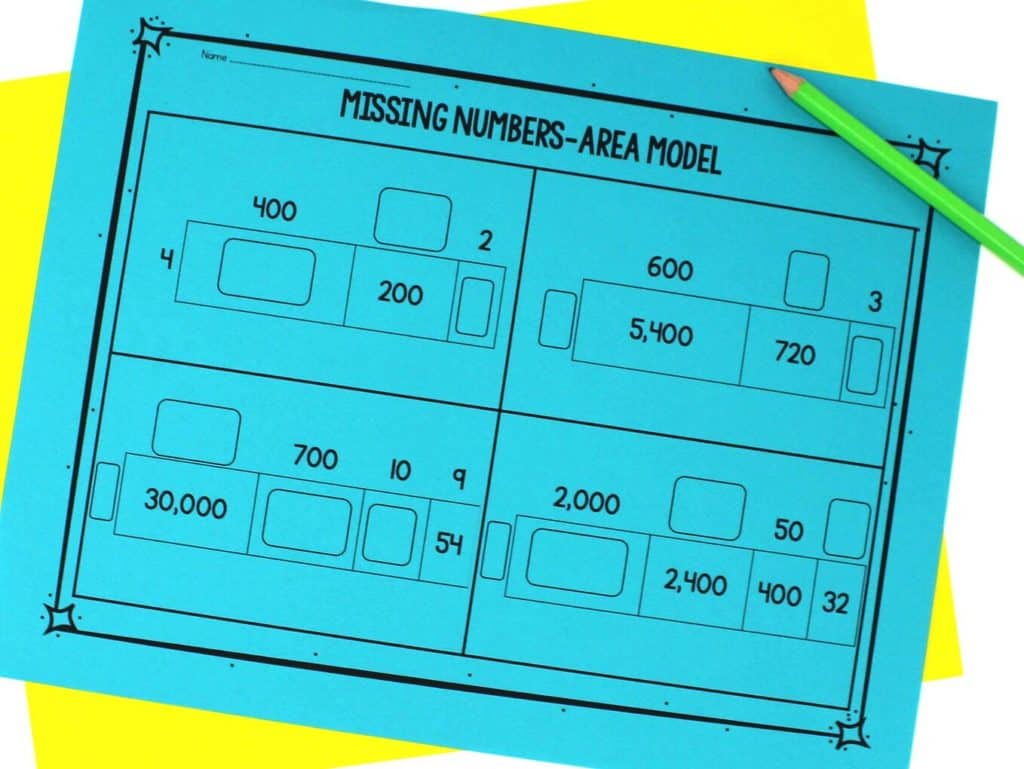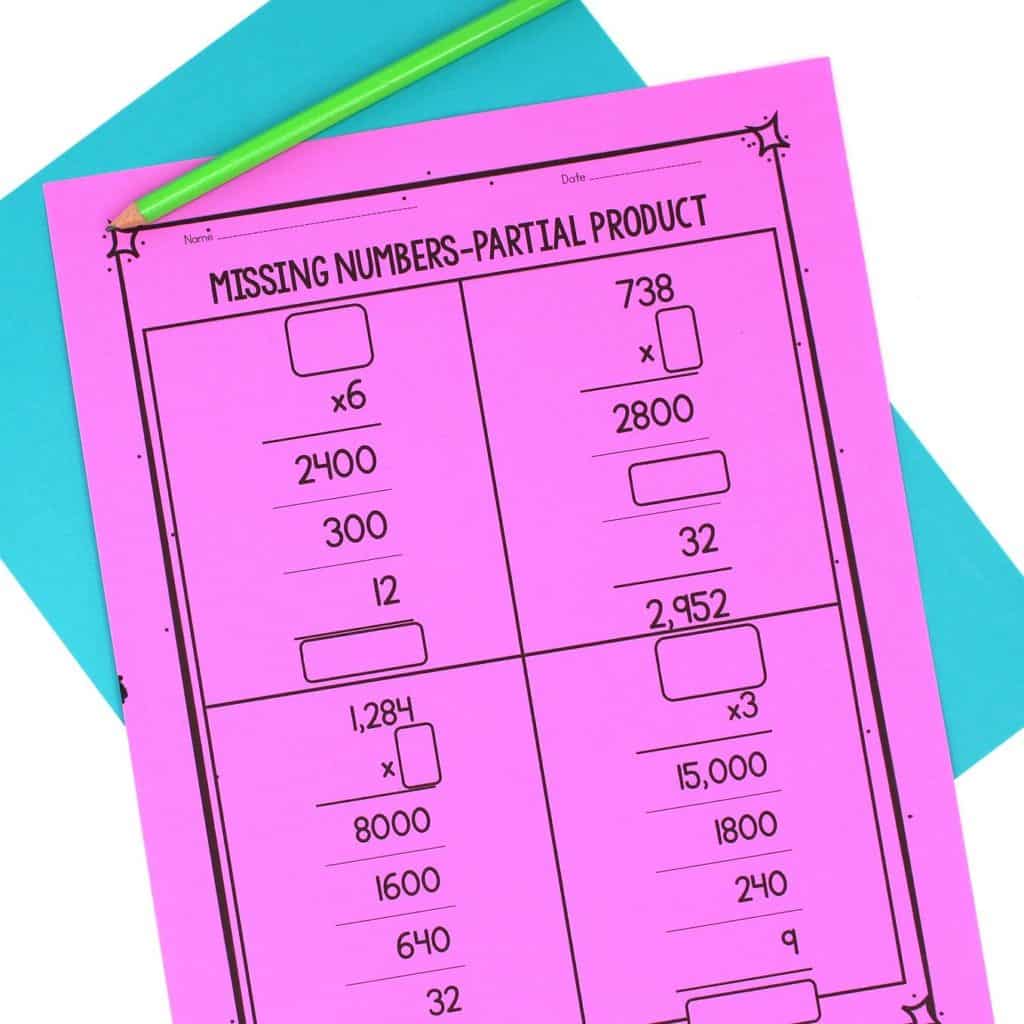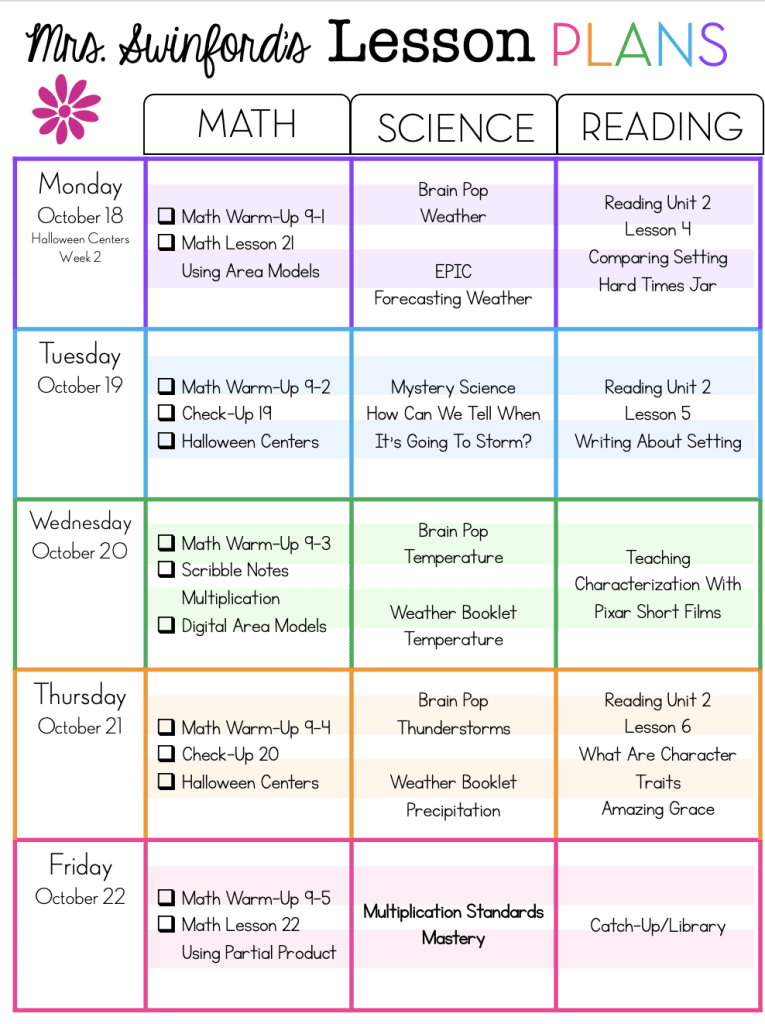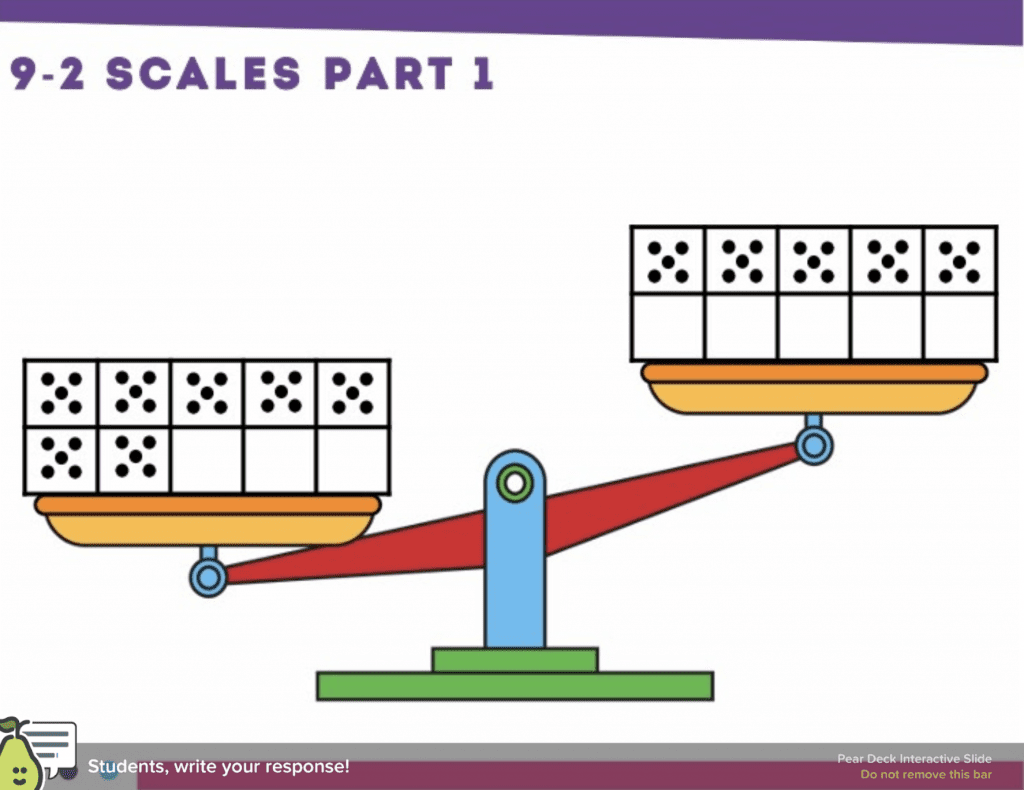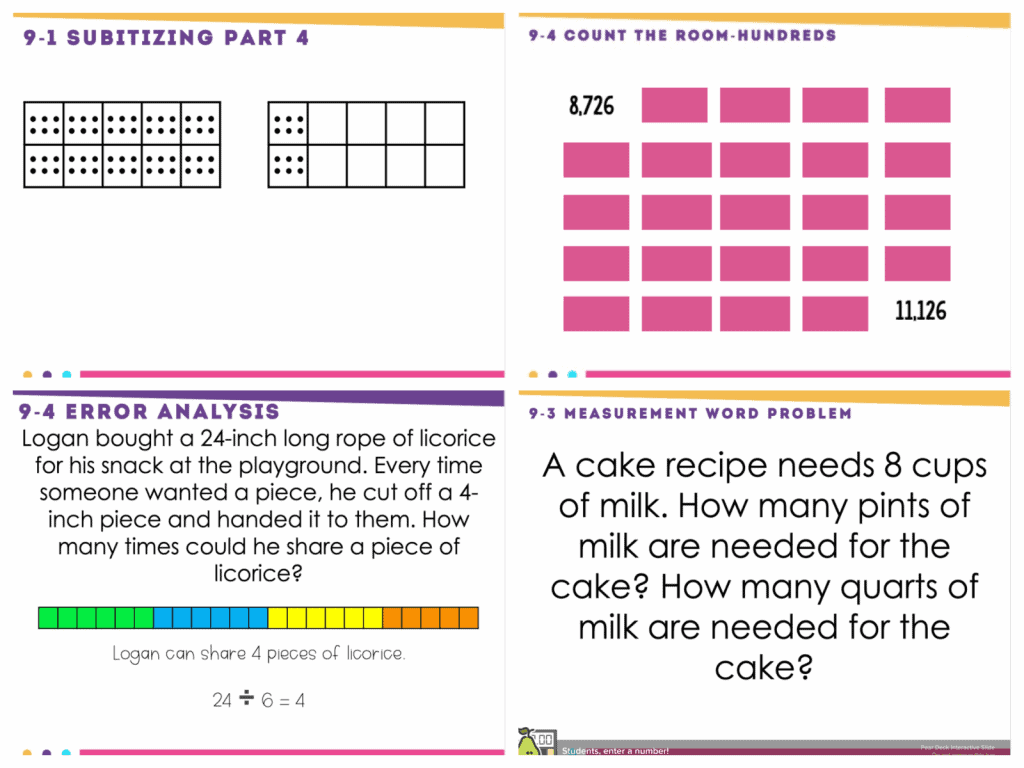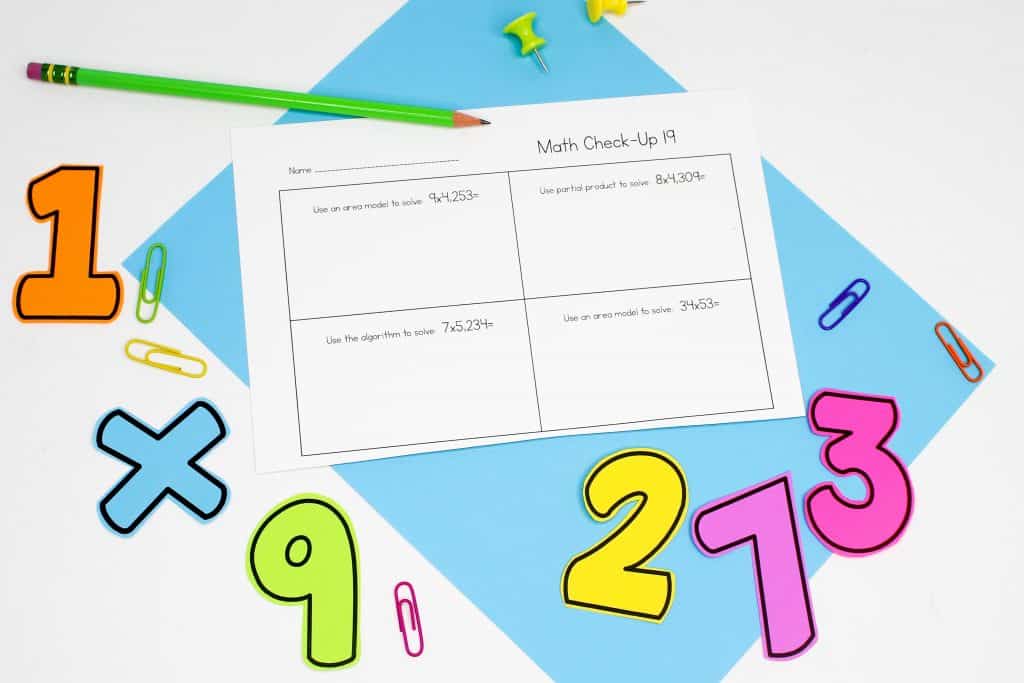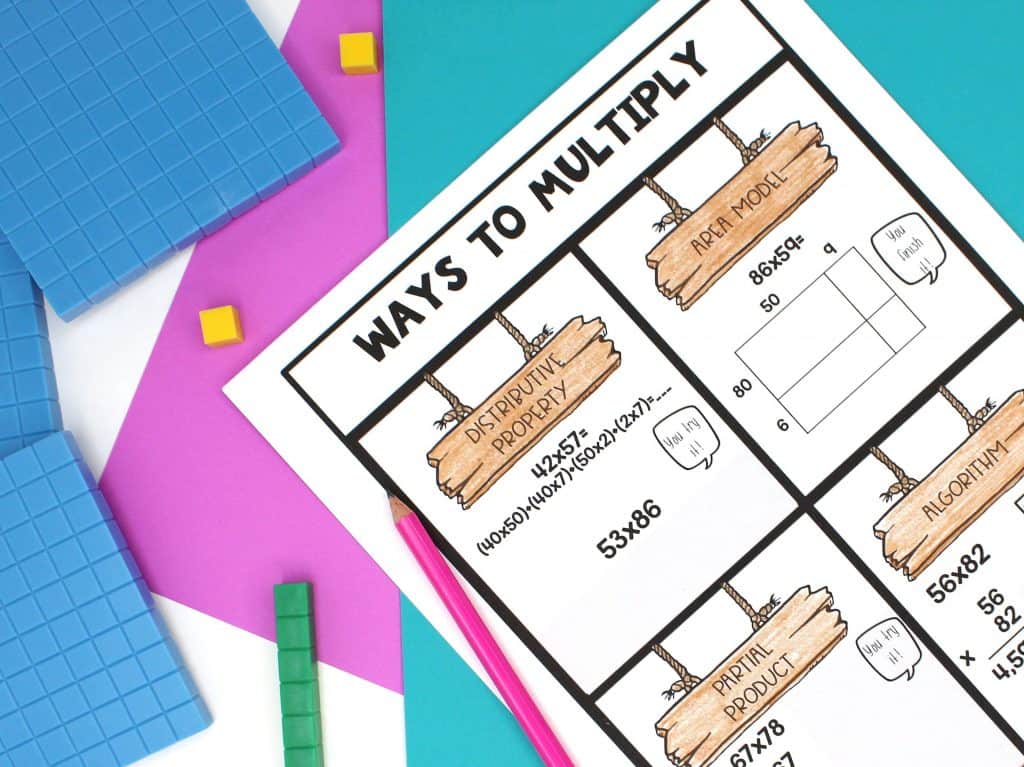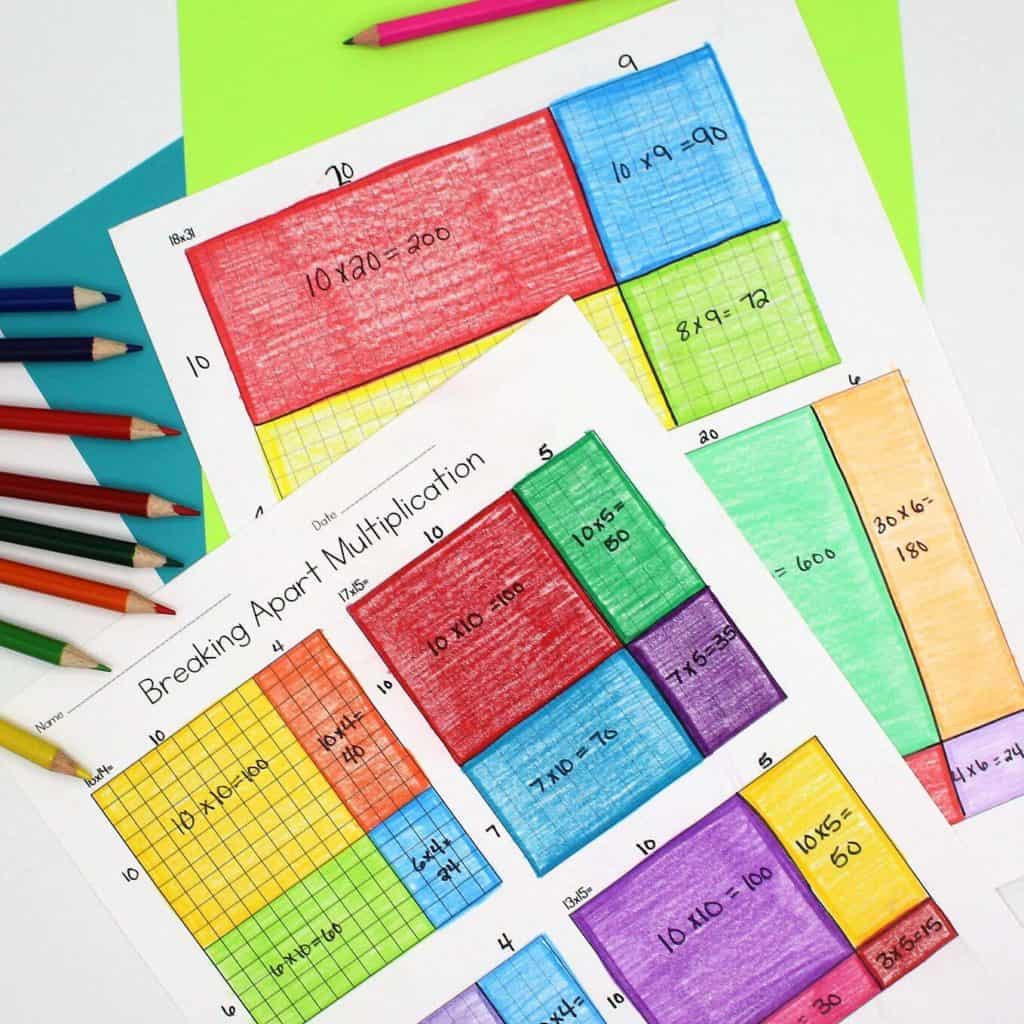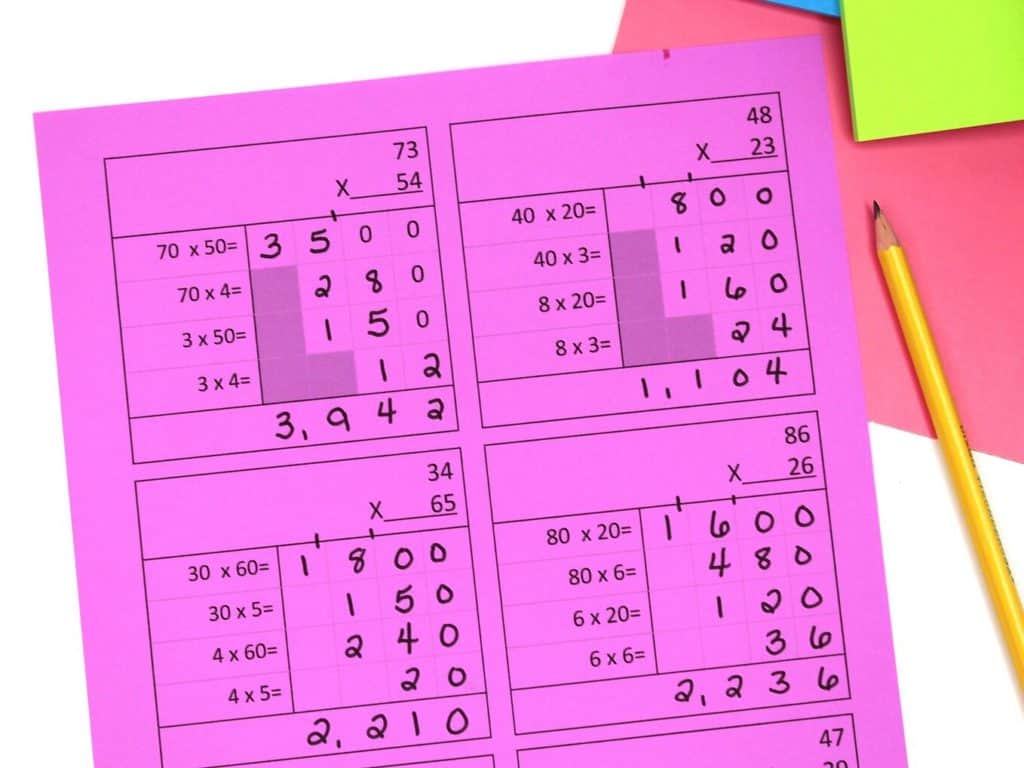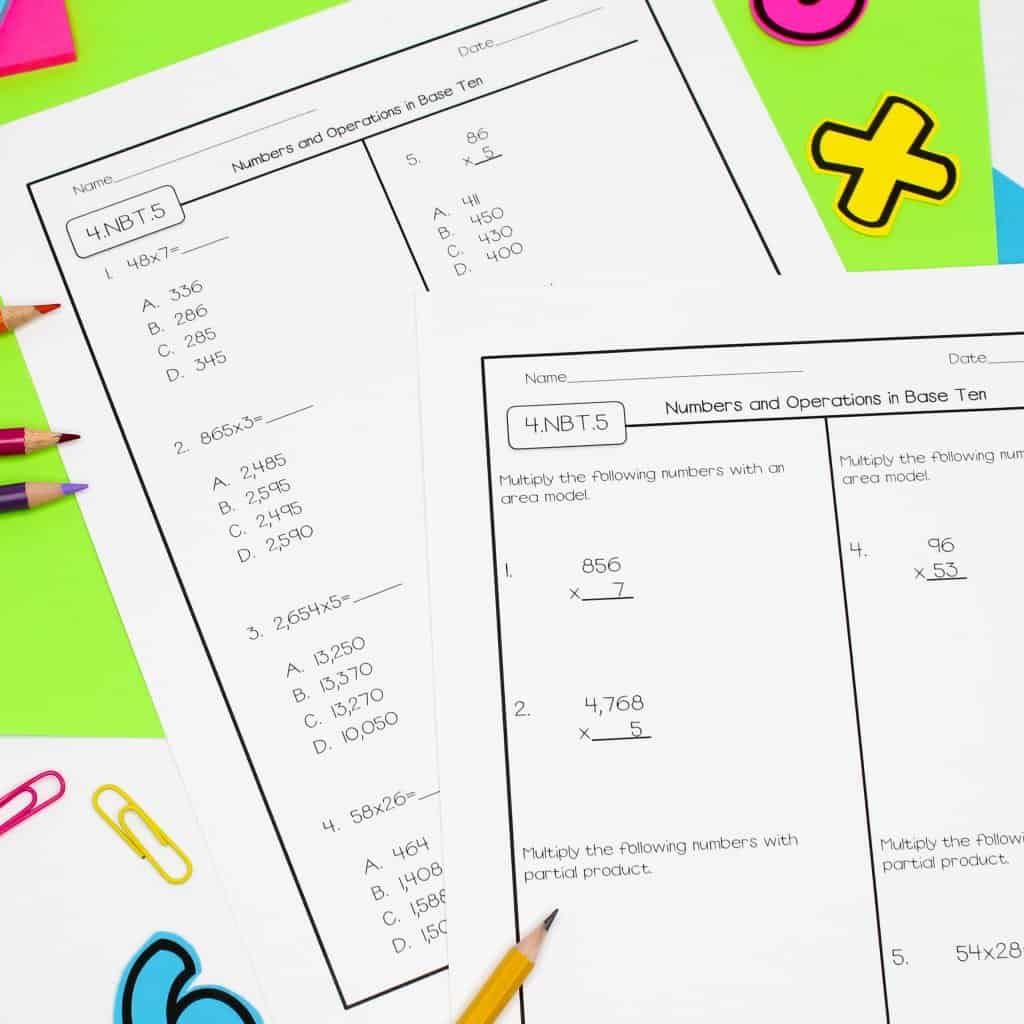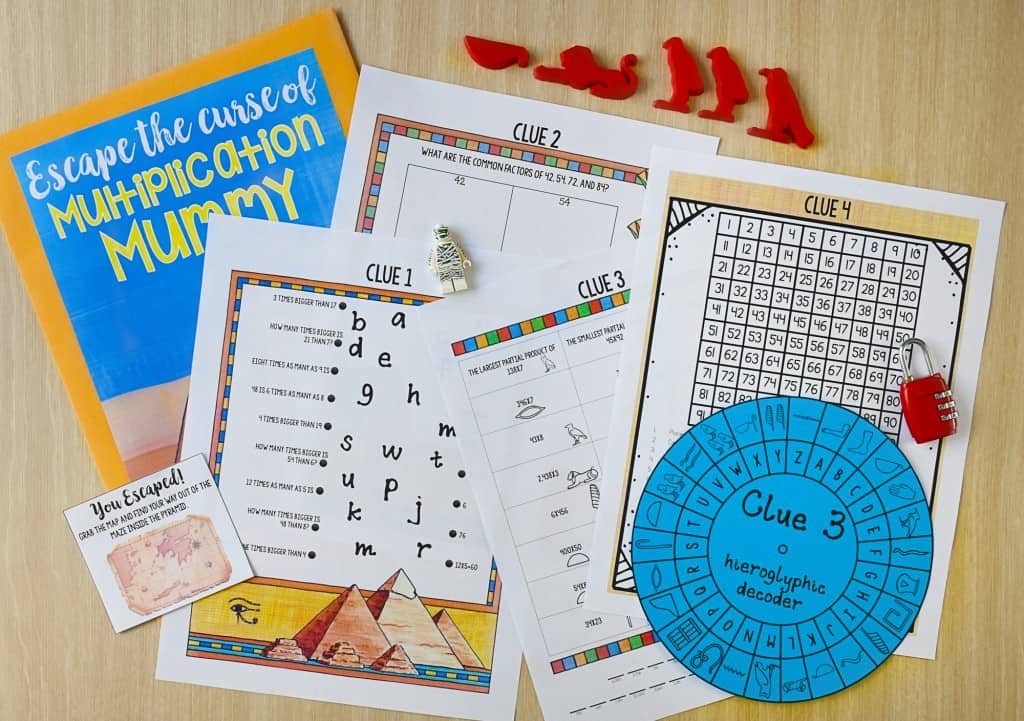This post is the second part of my multiplication series. It focuses on teaching multi-digit multiplication with area models, partial product, and incorporating problem solving. If you missed the first post in the series, you can find it here.
Week 4 1-Digit By 4-Digit
On the fourth week of the multiplication unit, I finally begin to focus on multi-digit multiplication. Since students should have a strong foundation, I’m able to move at a steady pace. During this first week, I keep the focus on 4-digit by 1-digit multiplication.
I try not to rush the area model lessons. I’ve found that it’s easy to introduce too much, too soon, and students end up confused. However, once students understand area models, it’s time to introduce solving multiplication with partial products.
Math Warm-Ups
This week’s Math Warm-Ups follow the same routine and format. In the SPLAT! game, there are now two blobs, which makes it interesting.
Math Check-Ups
Now that the problems are becoming more complex and more time consuming, there are fewer problems on students’ Math Check-Up. It’s important to not allow the check-ups to become too time consuming, because it’s important to avoid taking time away from your actual instruction.
Math Centers
This is students’ last week with their current set of math centers. When they finish their last activity, I have them turn in their center booklets. This is a great time to have students participate in self-reflection on their participation and effort during their centers.
Scribble Notes
As an extra review, students complete the distributive property page of their Math Scribble Notes. This guides the mini lesson for students’ lesson on Monday.
Multiplication Lessons
Once the foundations of multiplication are developed, it’s time to transition students to larger, multi-digit multiplication problems. I slowly fade away the individual squares from the arrays to allow students to build area models.

At this time, I only introduce area models and partial product. While I do teach other strategies, I’ve found that too much, toon soon can confuse students. You can read more about these multiplication lessons here.
Week 5-Area Models & Partial Product
I begin the week by reviewing 1-digit by 4-digit multiplication problems with area models and partial product. I also include word problems in our review, because it’s essential to consistently embed word problems into your instruction. I also begin to incorporate problem solving lessons into my plans, because it’s helpful for students to learn through problem solving.
Math Warm-Ups
The Math Warm-Ups follow the same format as the previous week. I love how in the count the room activity, the numbers move into the ten-thousands place, which is a great way to monitor student understanding.
Math Check-Ups
At this point in the year, rounding and subtraction are the two skills most likely to give students trouble, so I include those in the Math Check-Ups. The only other problems are one area model and one partial product multiplication problem.
Math Centers
This week I introduce brand-new centers, and these are a ton of fun! I love using a booklet for the my recording sheets and several of the center activities. This is printed front to back and folded to make a booklet. There is also a version of these centers that does not have a Halloween theme.
Candy Corn Division-This is a great way to review the concept of division. Students take a set number of candy corns and partition it equal into either equal groups or into groups with equal amounts.
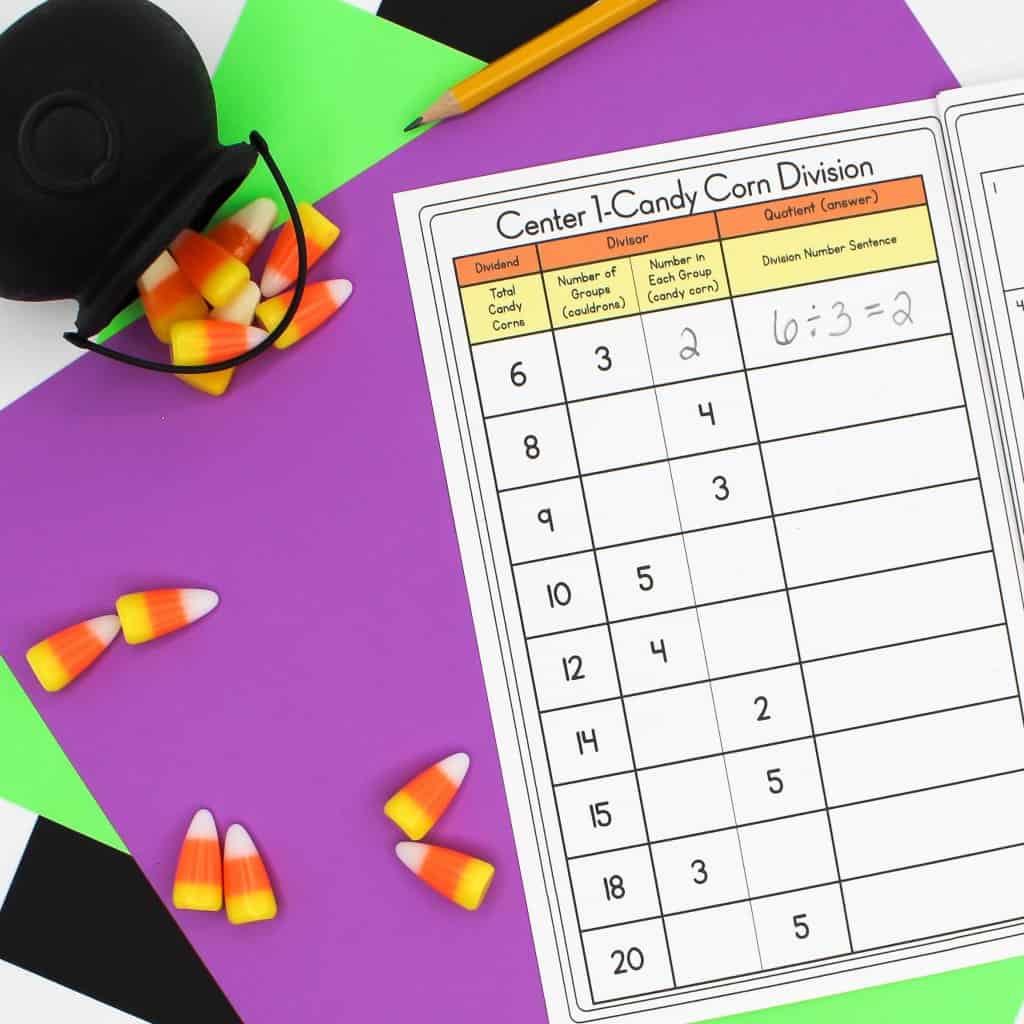
Center 2-Spooky Recipes-In this activity students receive a price list of ingredients for spooky recipes. They use the price list to answer multi-part word problems.
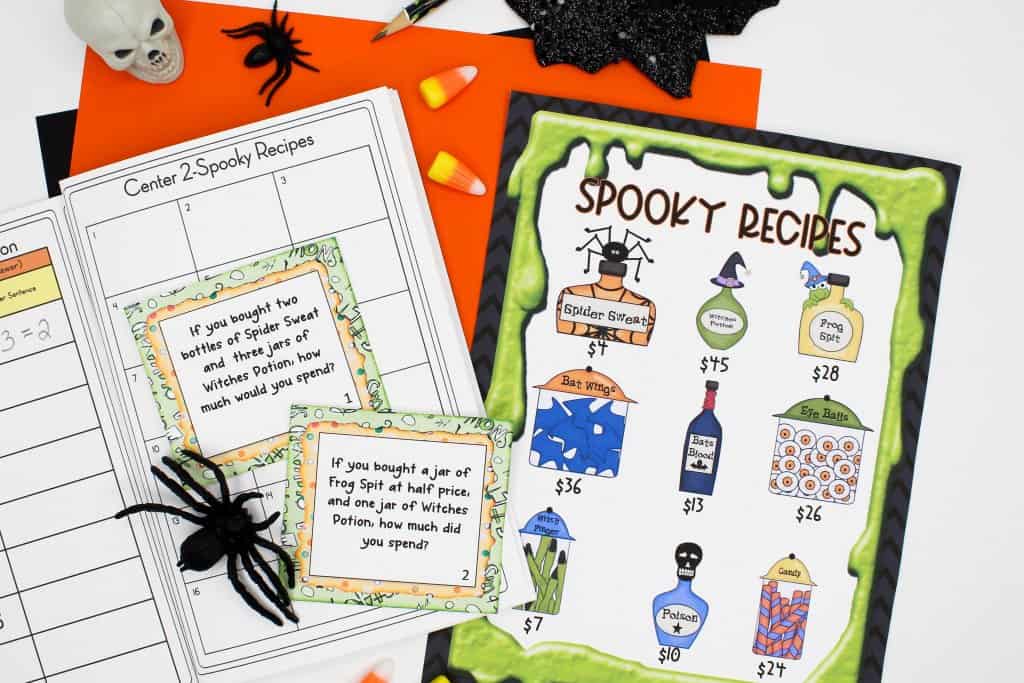
Center 3-Picture Puzzles-Students will think that the final pictures are hysterical. Teachers love the number sense that the activity helps develop.
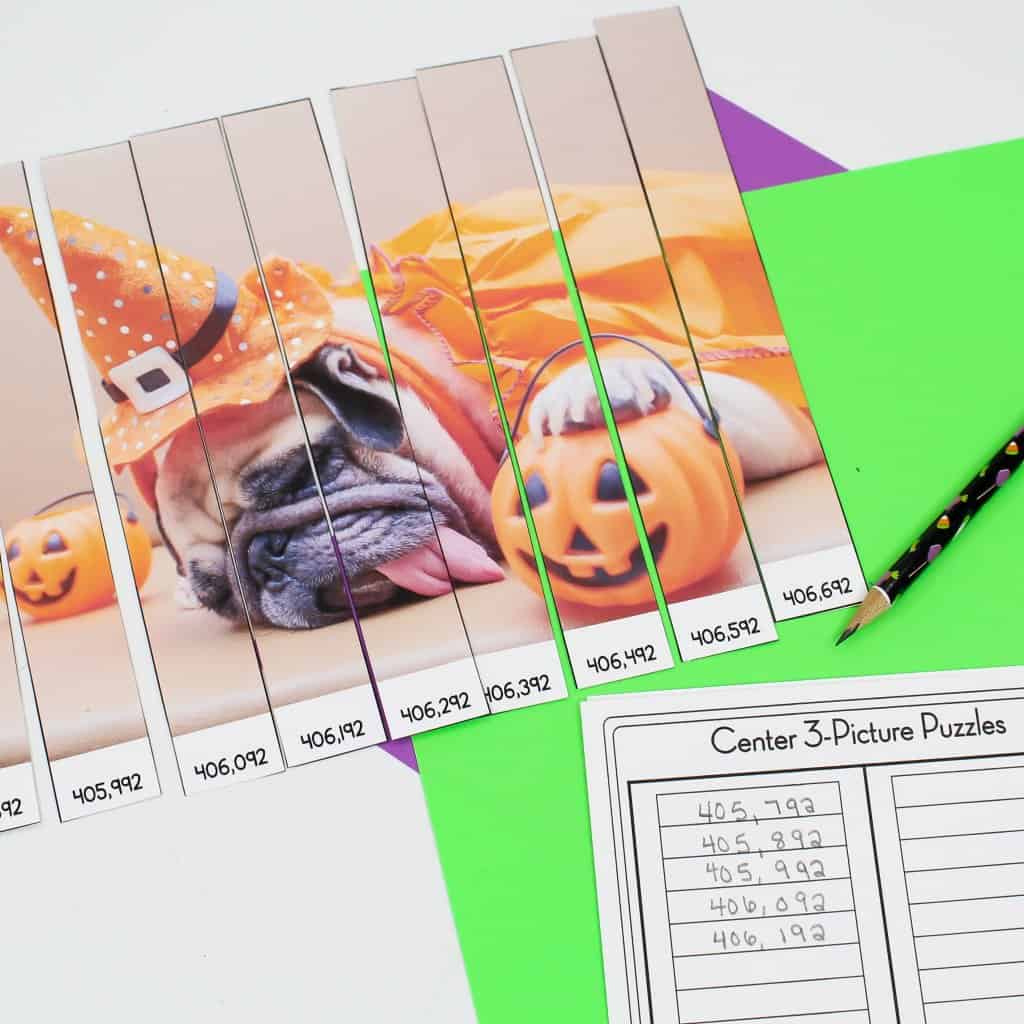
Center 4-Haunted Math-This activity is similar to the game of Clue. Students use deductive reasoning and thinking about 10 and 100 times the value of numbers to determine who stole the candy from the Halloween party and where they hid it.
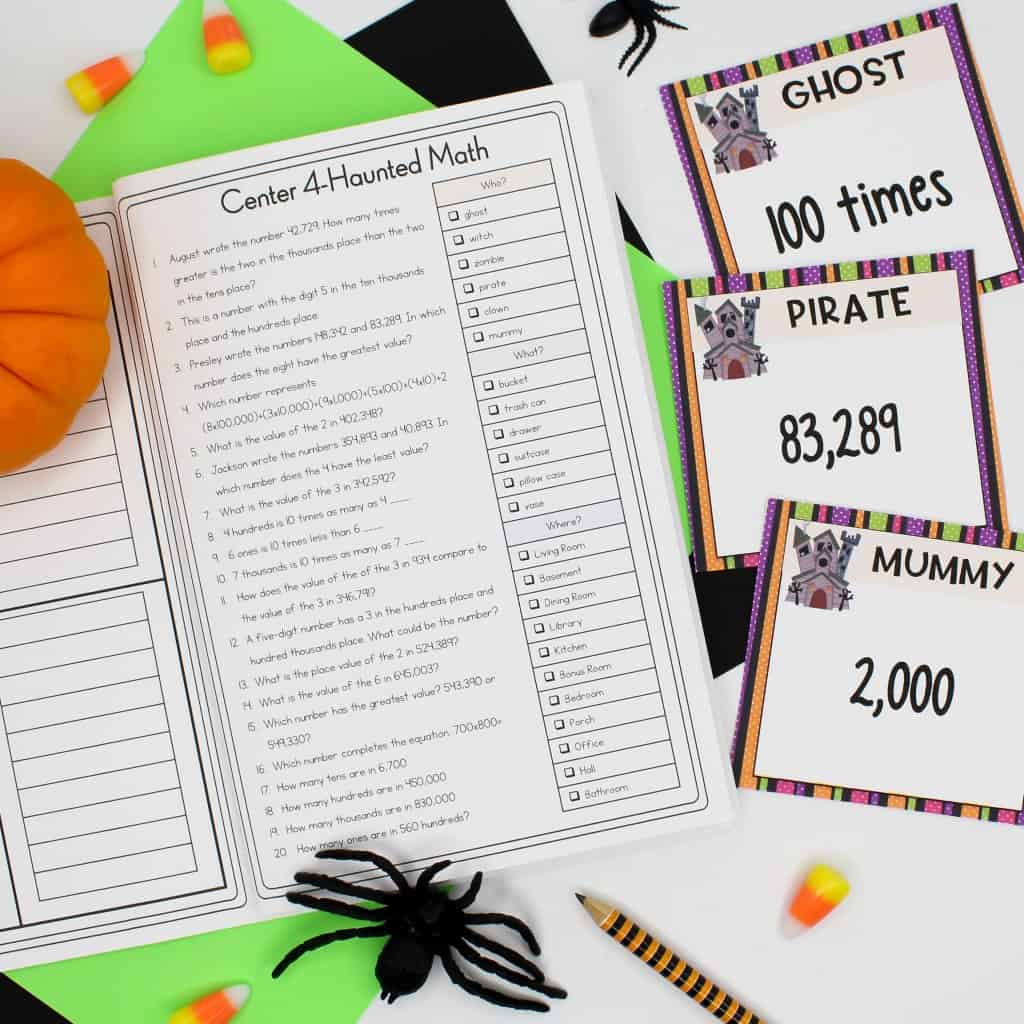
Center 5-Costume Shop-This is a fun problem solving activity where students determine how many of each costume was sold.
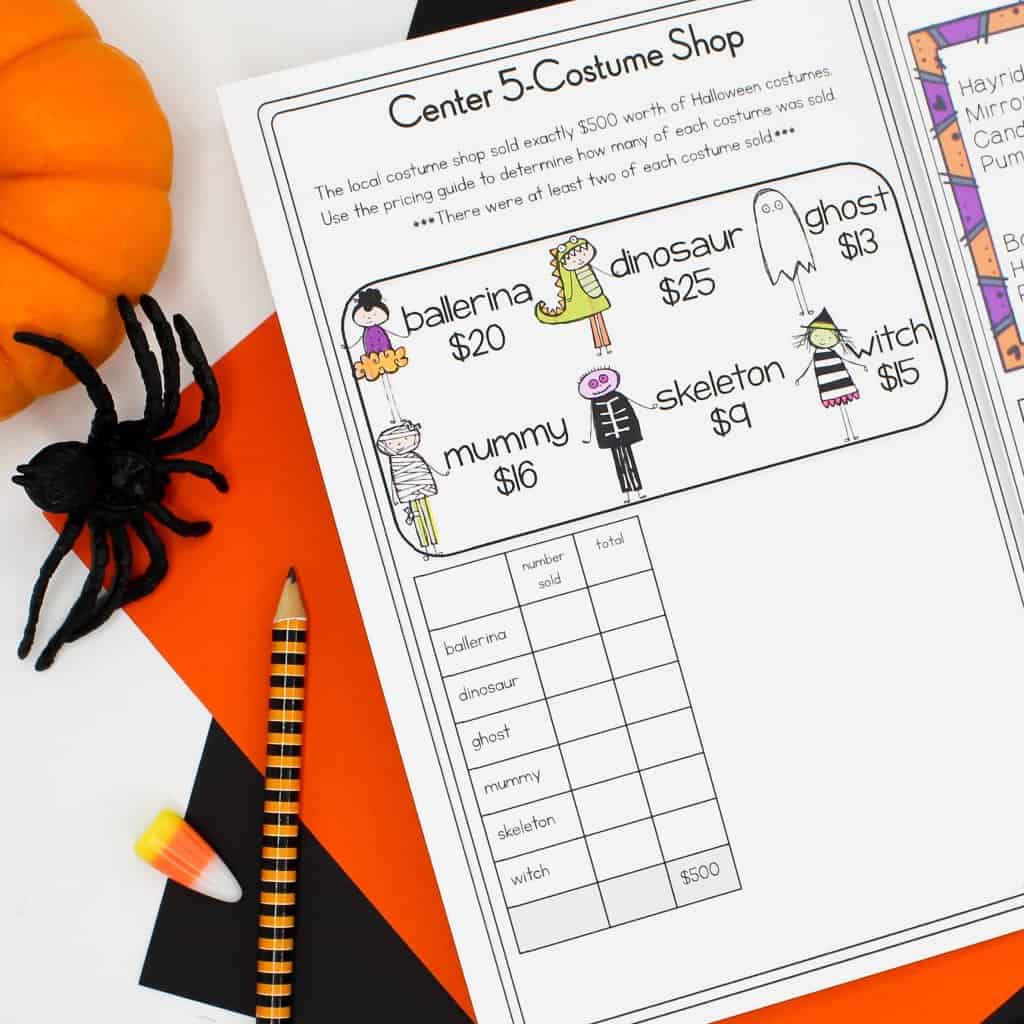
Center 6-Fall Carnival-This is another problem solving activity where students determine the cost of tickets for different fall carnival rides or activities.
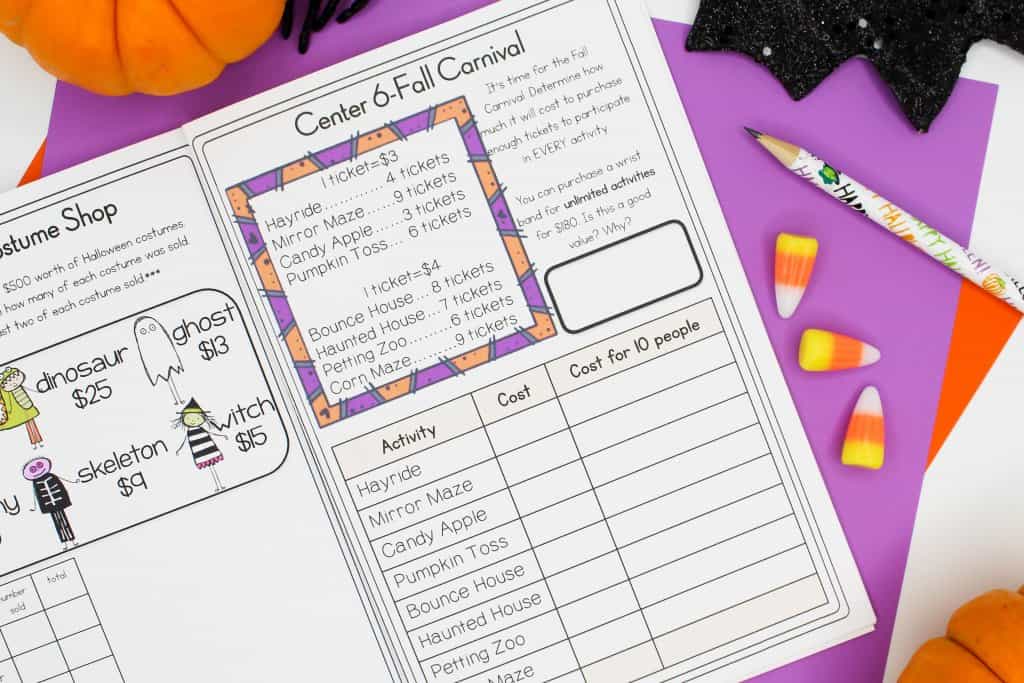
Center 7-Logic Puzzles-These are a blast! If your students have never done anything like this before, you’ll definitely want to model how to solve the puzzles. Once students see what to do, they can quickly catch on.
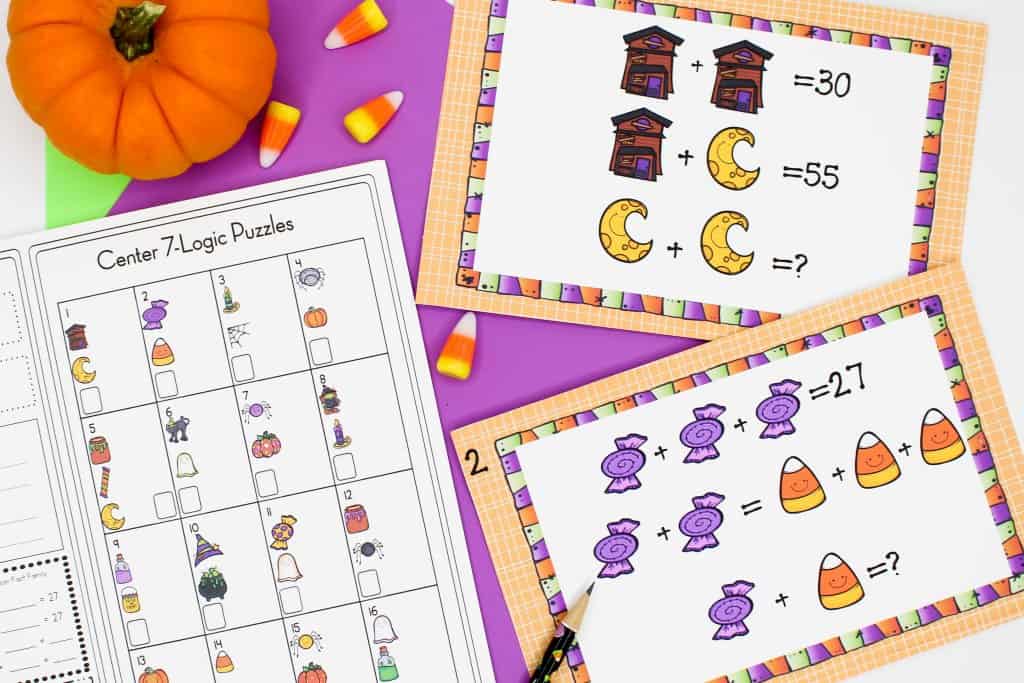
Center 8-Geometric Haunted House-In this center students use various geometric terms to create a haunted house. I included a separate page of grid paper that students can draw their house on, as well as example images of each geometric term.
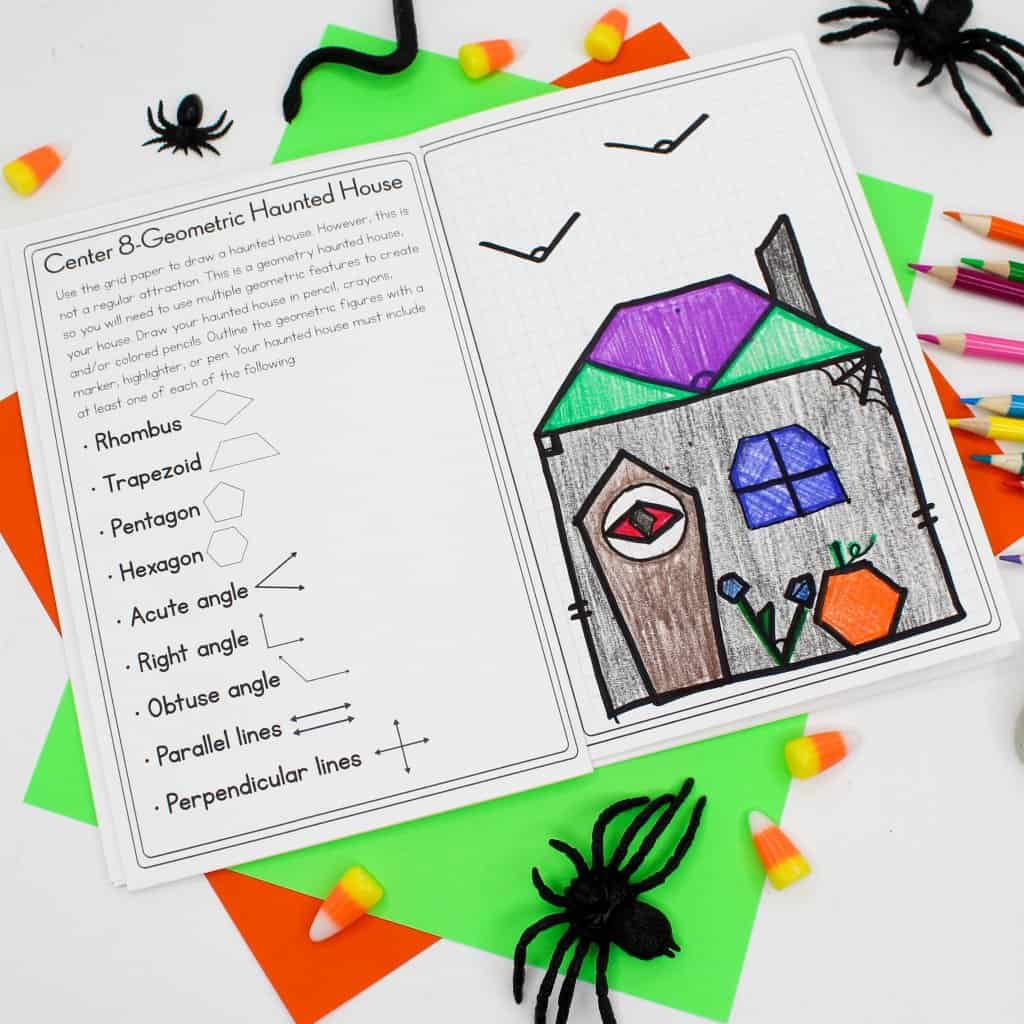
Center 9-3 Act Task-This is such an awesome and thought provoking activity. I especially love the fact that the Google Form won’t let students move forward without estimates and sharing what they know and need to know. Since it is quite challenging computation, I do let students use the calculator on their Chromebooks for the task.
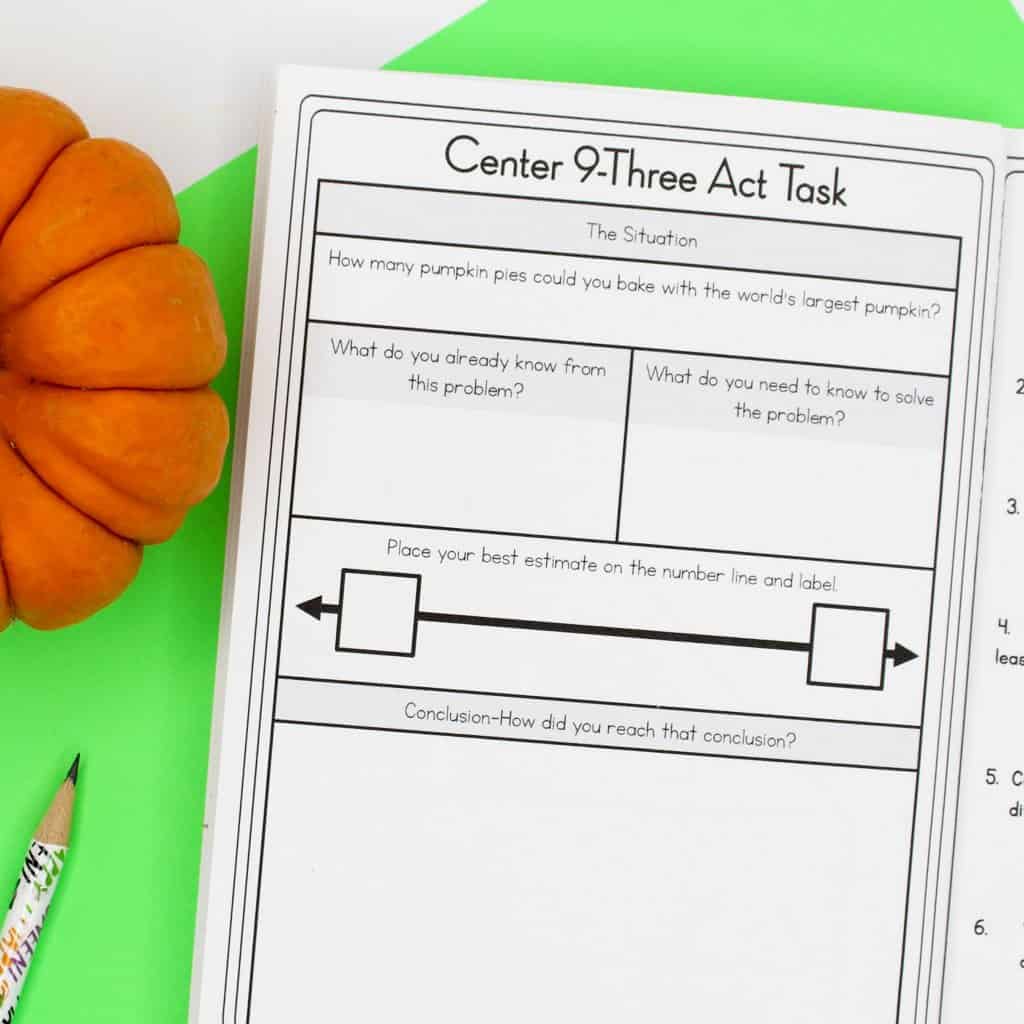
Center 10-Sweet Math-I highly recommend empty bags-for the activity or use online nutrition fact sources. Students use the information to solve word problems (many multi-step) about the nutrition facts.
Multiplication Lessons
When teaching word problems, I love using a highlighting strategy that you can read more about here. It’s also good to give students the opportunity to extend their thinking and to look at the models with a different approach.
Week 6-Area Models & Partial Product
On the sixth week of the multiplication unit, I focus on 2-digit by 2-digit multiplication. I have found that most students will breeze through this IF they have a solid conceptual understanding of multiplication.
Math Warm-Ups
A new activity is introduced to the Math Warm-Ups. Students balance equations using balance scales. There’s a lot going on in the image that activities multiplicative thinking as well as visual-spacial reasoning. I like to ask students how many dots we would need to add to a ten-frame to make the scales balanced. You can extend this by having students write equations to represent the unbalanced scales and then the balanced scales.
Math Check-Ups
You may have noticed that I skipped a Math Warm-Up. That’s simply because I’m highly intentional on making my warm-ups follow my lessons. It’s okay to skip around!
Math Centers
This is students’ second week with their Halloween themed math centers. They will continue following their booklet and complete four additional activities this week.
Scribble Notes
This week’s Scribble Notes culminate the multiplication lessons and strategies by having students share different strategies for multiplying multi-digit numbers. As always, it’s completely up to you on whether or not you teach the standard algorithm.
Multiplication Lessons
Once students are comfortable with single-digit multiplication, it’s time to move on to 2-digit by 2-digit multiplication. It’s best to follow the same process and begin with arrays and area models.
Once students are proficient with area models, they begin solving multi-digit multiplication problems with partial product. If needed, I provide students with scaffolding to help them transition to this strategy of multiplication.
Over the years, I’ve found that some students tend to strongly prefer area models and become confused with partial product. In those cases, I hold off requiring the student to use partial product. I’d rather the student be very confident and consistent with one strategy, rather than inconsistent or uncomfortable with multiple strategies. I give them time and come back to partial product later in the year.
Multiplication Assessment
Since this is a long unit, it may be helpful to break up the assessment into two separate assessments or to give part one and two on separate days.
Culminating Activity
My favorite way to culminate the unit is with a multiplication escape activity!
This is definitely a lot of moving parts, but it really does work! All the pieces of the puzzle fit together and work to compliment each other.
Let me know if you have any questions!

